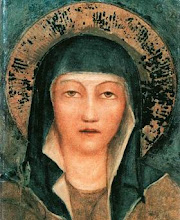A Public Confession
 Dear friends of “Canticle of Chiara,”
Dear friends of “Canticle of Chiara,”I actually wasn’t going to make any more posts until I received a beautifully written e-mail from a dedicated reader of this blog. Well, this person’s e-mail made me come to my senses. Thus, just as the Poor Clares make public confessions before their communities, I’ll make a confession before my own community on this blog.
You might remember a post a while back that talked about the “Eleventh Commandment”- don’t compare yourself with others. I’ve continuously broken this commandment by means of matching up my “Canticle of Chiara” blogs to the success of some other Catholic blogs. I watched in envy as some people that I knew started up blogs and three weeks later, the blog would be spotlighted in “Our Sunday Visitor” or some other national Catholic publication. I would check the rankings of St. Blogs Parish every day, and subsequently became discouraged when I perceived how little attention “Canticle of Chiara” received. Finally, I became so discouraged when I felt that “Canticle of Chiara” had gotten little publicity in the wake of the recent Feast of St. Clare that I was determined to stop posting for an indefinite period of time. Honestly, St. Clare herself would most likely slap me for having these sentiments! I ask you all to forgive me.
After I received the aforementioned e-mail, I realized that running this blog could be compared to nuns in a monastery. Indeed, nuns have a certain amount of people whom they are able to meet in person and keep in regular contact with- just like those of you who leave comments and e-mail me. However, in most cases nuns spend their entire lives doing prayer and penance for those whom they will never see. The nuns may never receive a definitive sign that their prayers for people in the world may be answered- they’ll never know for sure whether a certain person has been converted to Christ, and even if that person does indeed convert, the nuns will never receive news of it. Nonetheless, this lack of absolute assurance in no way renders futile everything that the nuns do for others - somehow the nuns have faith that God in His Providence will hear and answer the prayers. Likewise, there are so many people out there that I will never realize are looking at my blog. From now on, even if there’s only one person who benefits from reading my posts, that’s all the motivation I’ll need to keep “Canticle of Chiara” going. After all, even if there had been just one person on earth, Jesus still would have died for that person.
In closing, I’m deeply sorry for not having my priorities straight. I look forward to continuing “Canticle of Chiara”!
















